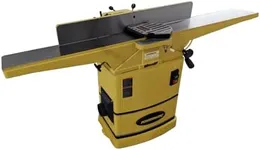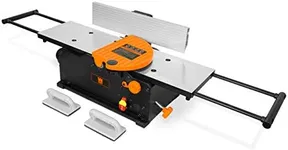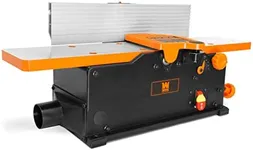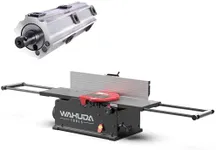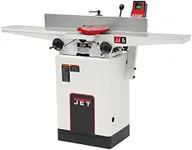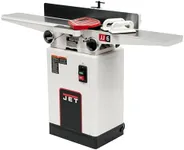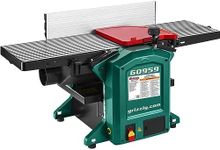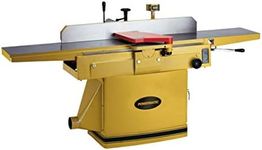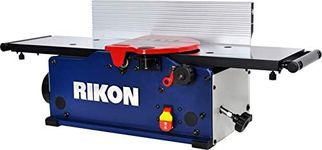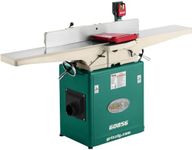Buying Guide for the Best Electric Jointers
Choosing the right electric jointer can make a significant difference in your woodworking projects. Electric jointers are essential tools for flattening and straightening wood, ensuring that your pieces fit together perfectly. When selecting an electric jointer, it's important to consider several key specifications to ensure you get the best fit for your needs. Understanding these specs will help you make an informed decision and choose a jointer that will serve you well in your woodworking endeavors.Cutting WidthThe cutting width of an electric jointer refers to the maximum width of wood that the jointer can handle. This spec is important because it determines the size of the wood pieces you can work with. Cutting widths typically range from 6 inches to 12 inches. If you primarily work with smaller pieces, a 6-inch jointer may suffice. However, for larger projects or wider boards, you might need a jointer with a cutting width of 8 inches or more. Consider the typical size of your woodworking projects to choose the right cutting width.
Cutting DepthCutting depth indicates how much material the jointer can remove in a single pass. This is crucial for efficiency and precision in your work. Cutting depths usually range from 1/8 inch to 1/2 inch. For general woodworking, a cutting depth of 1/8 inch to 1/4 inch is often sufficient. If you need to remove more material quickly, a deeper cutting depth might be beneficial. Think about the type of wood you use and how much material you typically need to remove to select the appropriate cutting depth.
Motor PowerMotor power, measured in horsepower (HP), determines the jointer's ability to handle tough or dense wood. More powerful motors can handle harder woods and larger pieces more efficiently. Motor power typically ranges from 1 HP to 3 HP. For hobbyists or light woodworking, a 1 HP motor may be adequate. For more demanding tasks or professional use, consider a jointer with 2 HP or more. Assess the types of wood you work with and the intensity of your projects to choose the right motor power.
FenceThe fence on a jointer is a guide that helps you keep the wood straight and at the correct angle during operation. A sturdy, adjustable fence is important for accuracy and versatility. Fences can tilt to various angles, typically up to 45 degrees. If you need to make angled cuts or work with different shapes, an adjustable fence is essential. Consider the complexity of your projects and whether you need to make angled cuts to determine the importance of a high-quality fence.
Table LengthThe table length of a jointer affects the stability and support of the wood during operation. Longer tables provide better support for longer pieces of wood, reducing the risk of snipe (uneven cuts at the ends). Table lengths usually range from 40 inches to 60 inches. If you work with long boards or need extra stability, opt for a jointer with a longer table. For smaller projects or limited space, a shorter table may be sufficient. Consider the typical length of wood you work with to choose the right table length.
Cutterhead TypeThe cutterhead is the part of the jointer that holds the blades and does the cutting. There are different types of cutterheads, including straight knife, helical, and spiral. Straight knife cutterheads are common and less expensive but can be noisy and require frequent blade changes. Helical and spiral cutterheads are quieter, produce smoother cuts, and have longer-lasting blades. If you prioritize smooth cuts and less maintenance, consider a helical or spiral cutterhead. Think about your tolerance for noise and maintenance to choose the right cutterhead type.

